An epicurean adventure to: France
These crispy, battered fish goujons are the perfect finger food for your next party!
They're easy to make and can be served with a dipping sauce of your choice. Equally, toddlers and young kids love them. Serve with a healthy salad for lunch, or a Friday night family treat with a side of chips or flavoured, spicy rice.
To make homemade goujons, simply coat strips of fish fillets in batter and cover them with panko breadcrumbs. Follow our easy 3-2-1 frying method for guaranteed golden, crunchy fish strips that will give your local chippy a run for their money!
Where do fish goujons originate from?
Fish goujons have their origins in France, where delicate strips of fresh sole would be coated in butter or egg yolk and then generously coated with seasoned breadcrumbs. These delightful morsels are then fried to perfection in oil.
To add a French touch to your goujons, serve them alongside Dijon mustard and cornichons, those delightful small French gherkins.
Fancy a refreshing non-alcoholic drink with your goujons, why not try a Rock shandy? For other quick dinner recipes, try these chicken rissoles, pea fritters or this 15-minutes lemon garlic pasta. For appetisers to accompany your fish goujons, also try these mini homemade pork and chorizo sausage rolls.
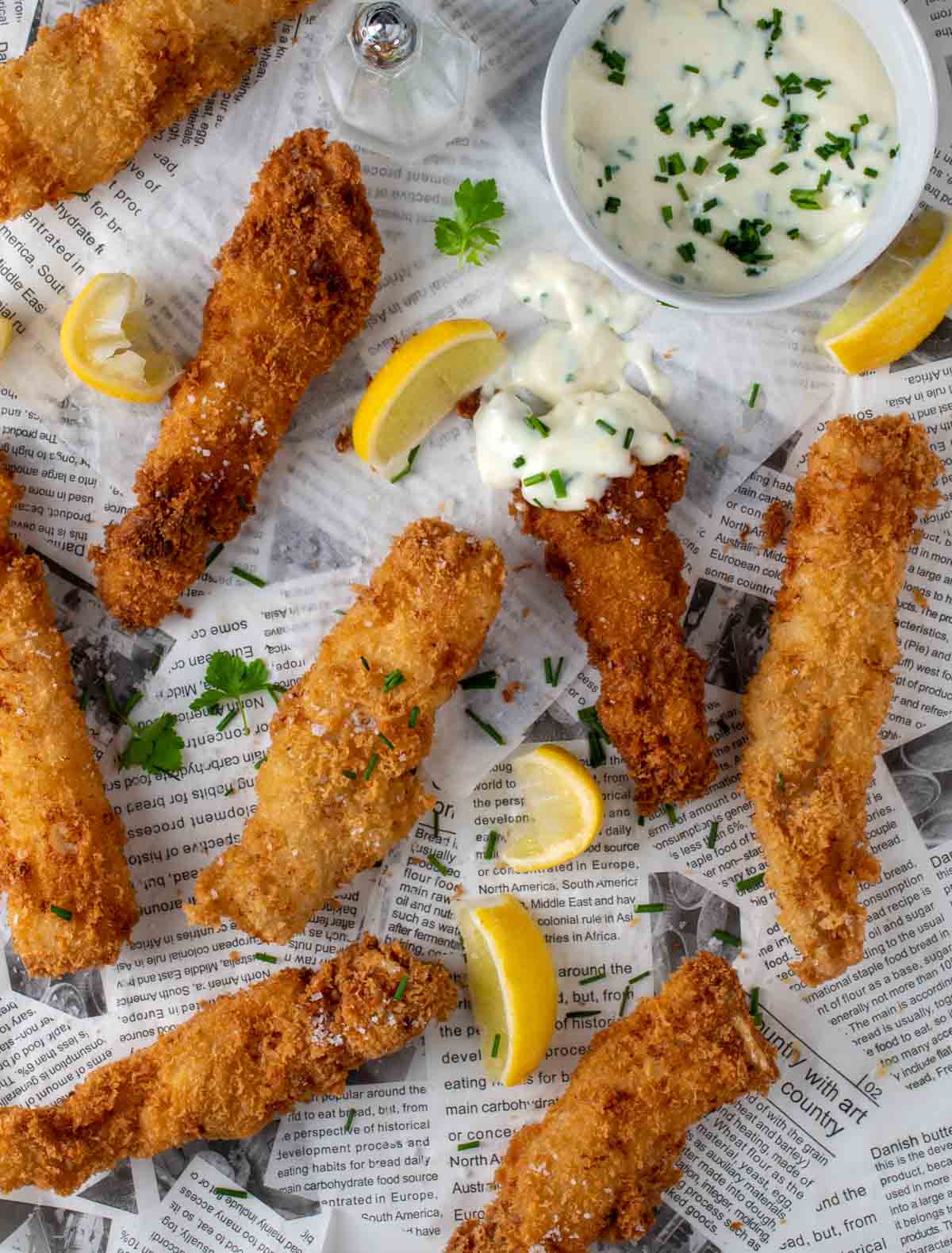
Jump to:
- Where do fish goujons originate from?
- Fast facts - France
- What's to love about this goujon recipe
- Key ingredients and substitutions
- What's our 3-2-1 method?
- How to successfully make fish goujons - Step-by-step
- Storage and reheating
- What to serve with homemade fish goujons
- Tips and tricks
- FAQ
- More fish recipes
- Recipe
Fast facts - France

| Location | France is located in Western Europe and is bordered by several countries, including Belgium, Luxembourg, Germany, Switzerland, Italy, Spain, and Andorra. It also has coastlines along the Mediterranean Sea, the Atlantic Ocean, and the English Channel. |
| Language | The official language of France is French. |
| Population | Circa 67 million people. |
| Trivia | The Eiffel Tower, one of the most iconic landmarks in the world, was originally intended to be a temporary structure for the 1889 Exposition Universelle (World's Fair) held in Paris. However, it was so popular with the public that it was allowed to remain standing and has since become a symbol of France. |
What's to love about this goujon recipe
- Less than 30 minutes to get them on your plate.
- Easy to make when you follow our step-by-step guide.
- Egg-free.
- Works equally well as party appetisers or as a main meal.
- Can be served with various dipping sauces and side dishes.
- Popular with kids. It's very similar to breaded fish fingers but with whole pieces of fish. Add this to your list of regular family meals.
- Follow our 3-2-1 frying method for guaranteed crispiness.
- Dairy-free.
Key ingredients and substitutions
**Please see the recipe card at the bottom of this post for the full list of ingredients.
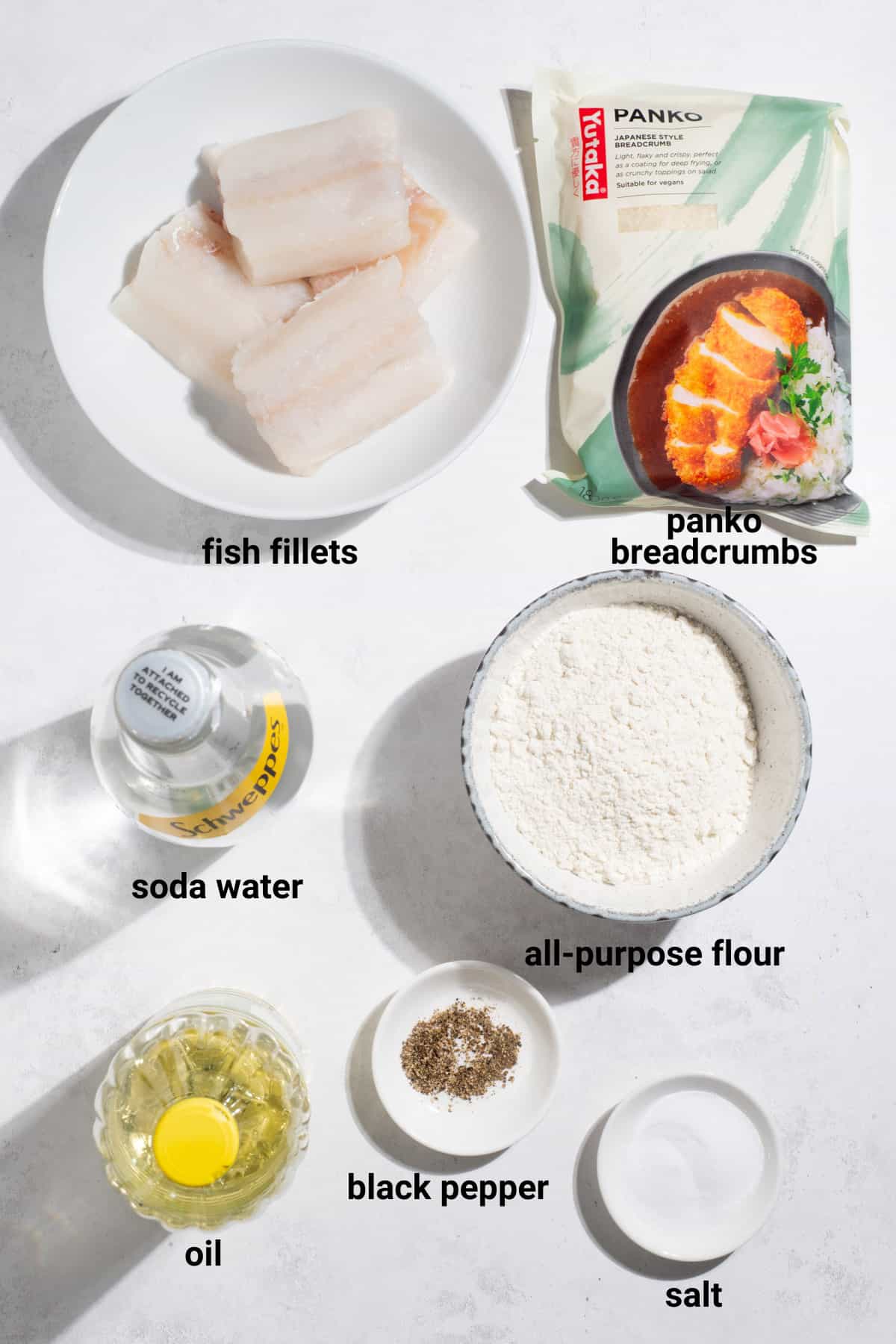
Fish
Feel free to choose your favourite white fish for this recipe. We've found that cod or hake delivers that classic fish and chip shop flavour we all know and love.
We have no affiliation with Aldi, but their 400g packs of frozen cod or hake work great for this recipe. You get four pieces of fish which when split lengthways, give you perfectly sized goujons of about 17cm in length and 4cm at the widest part.
If you have different-sized fish fillets to the above, you can slice them into the size strips you prefer. Just be aware that the smaller the strips, the less time frying it will need.
Other fish you can use for fish goujons:
- Haddock
- Sole
- Plaice
- Basa
Soda water
Adding soda water to the batter gives it a light and airy texture, which makes a noticeable difference. While Indian tonic water can be a good substitute, we must admit that soda water is the best choice.
Panko breadcrumbs
These irresistibly crispy breadcrumbs are a kitchen essential! We strongly suggest using panko instead of regular breadcrumbs. They are lighter and give a much crispier coating.
Panko can typically be found in the Asian food section of most supermarkets.
Oil
Use an oil with a high smoking point, like sunflower oil, vegetable oil, maize oil or canola oil. Olive oil will not be suitable for deep frying.
What's our 3-2-1 method?
- Fry the fish for three minutes and turn them around in the oil.
- Fry for two minutes and turn them around again.
- Fry for one minute more.
How to successfully make fish goujons - Step-by-step
Prepping
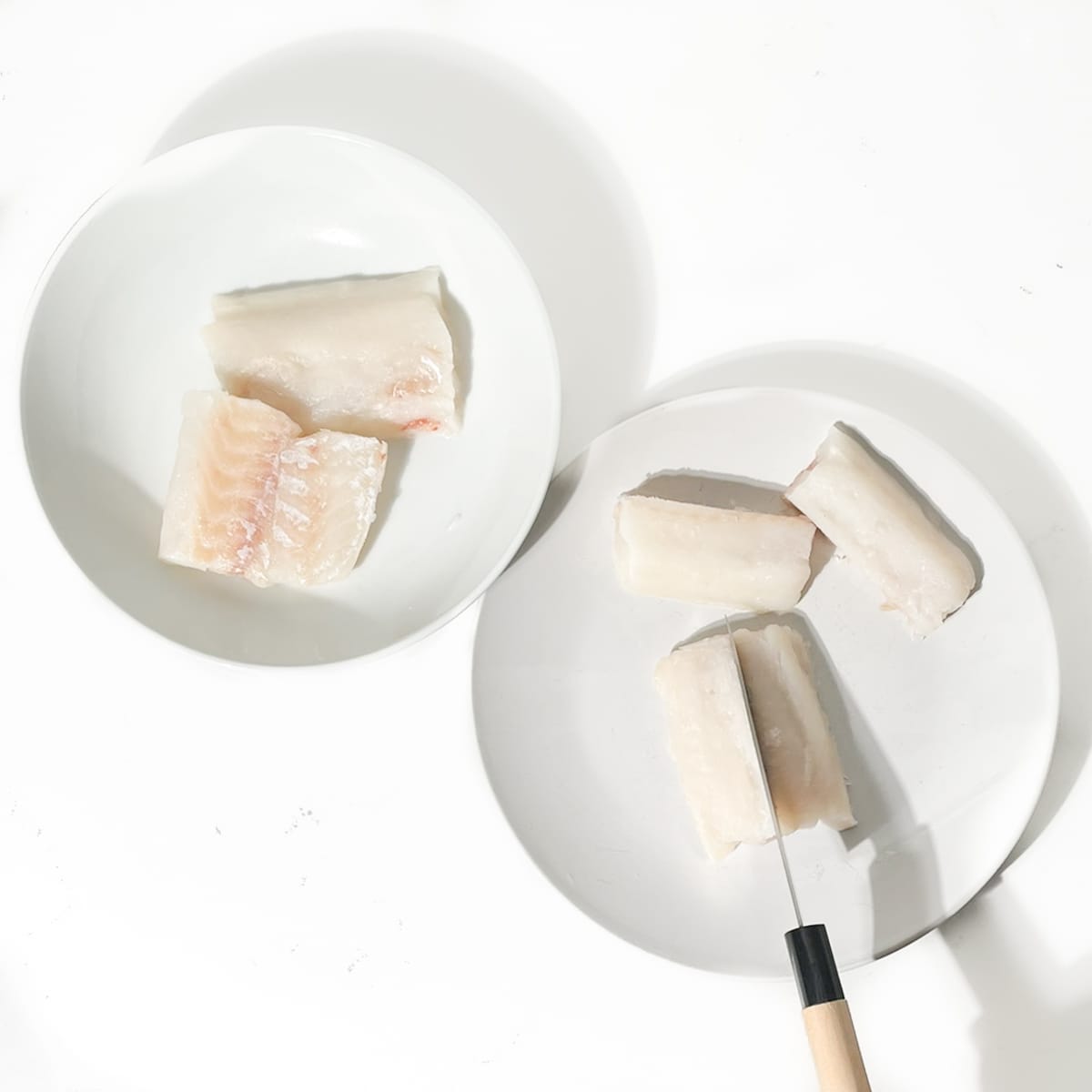
- Use a small sharp knife to cut the fish into strips. For standard-sized cod or hake fillets, slicing them lengthways along the middle line will give you nicely sized goujons.
- Pat the fish dry with a piece of kitchen paper to remove any moisture from the surface.
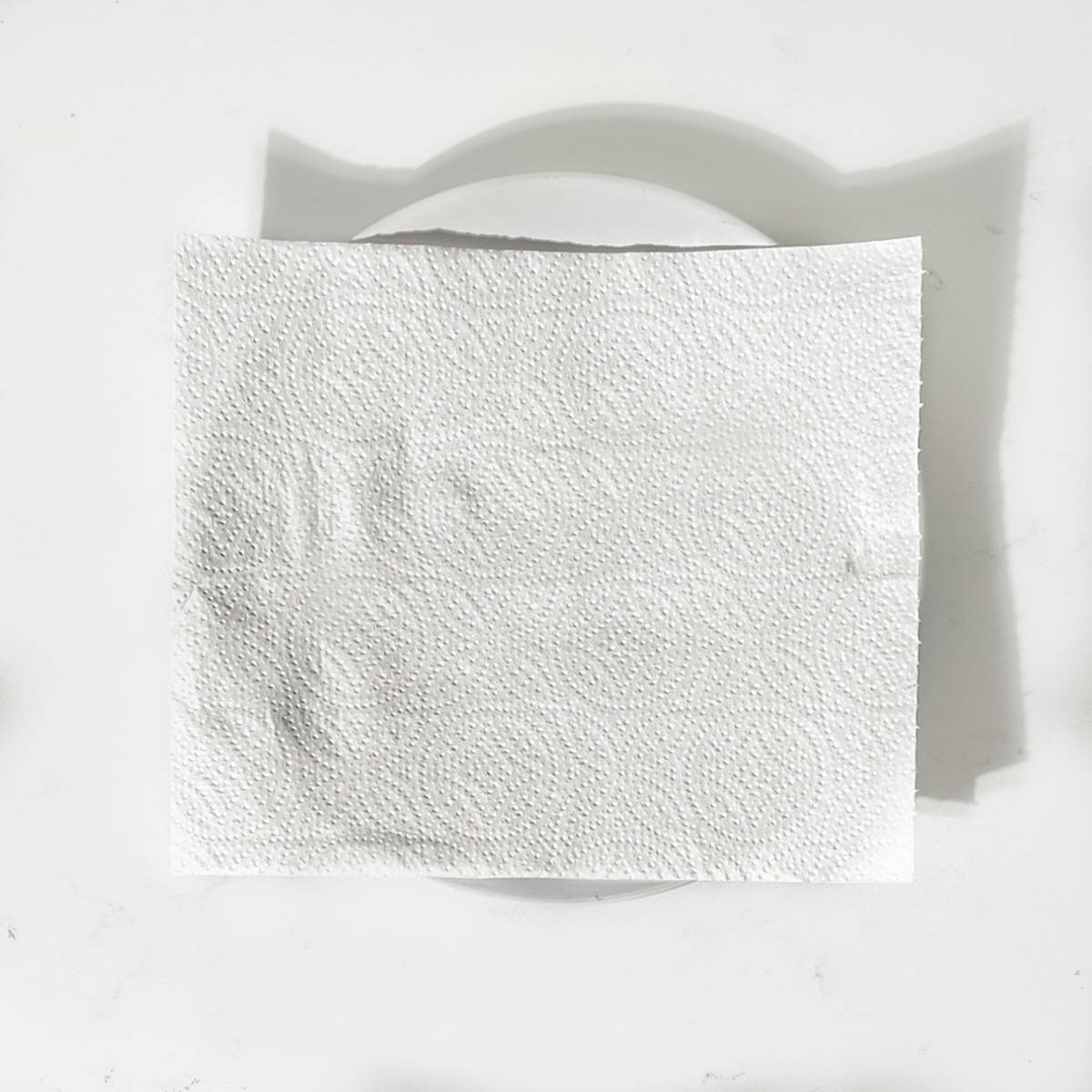
- Place a double layer of kitchen paper on a clean plate. This will hold the cooked goujons and soak up any excess oil.
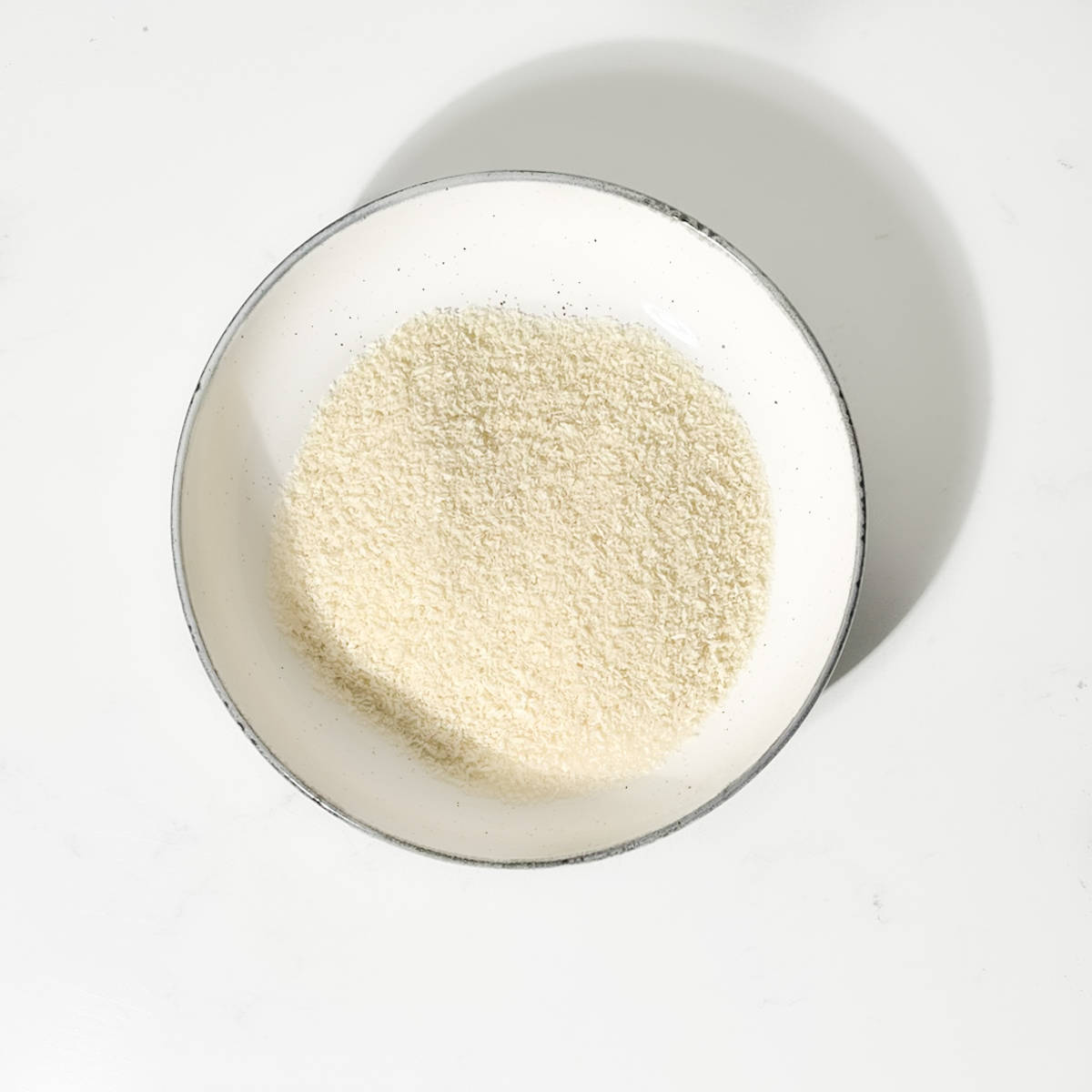
- Spread half of the panko crumbs onto a plate or shallow dish. If needed, you can top it up with the remaining fresh crumbs when you're halfway through the coating process.
Note: We recommend adding only half of the breadcrumbs at first because they can become moist from the wet flour mixture, making it difficult to achieve a crispy coating. Save the bone-dry breadcrumbs and add them as needed.
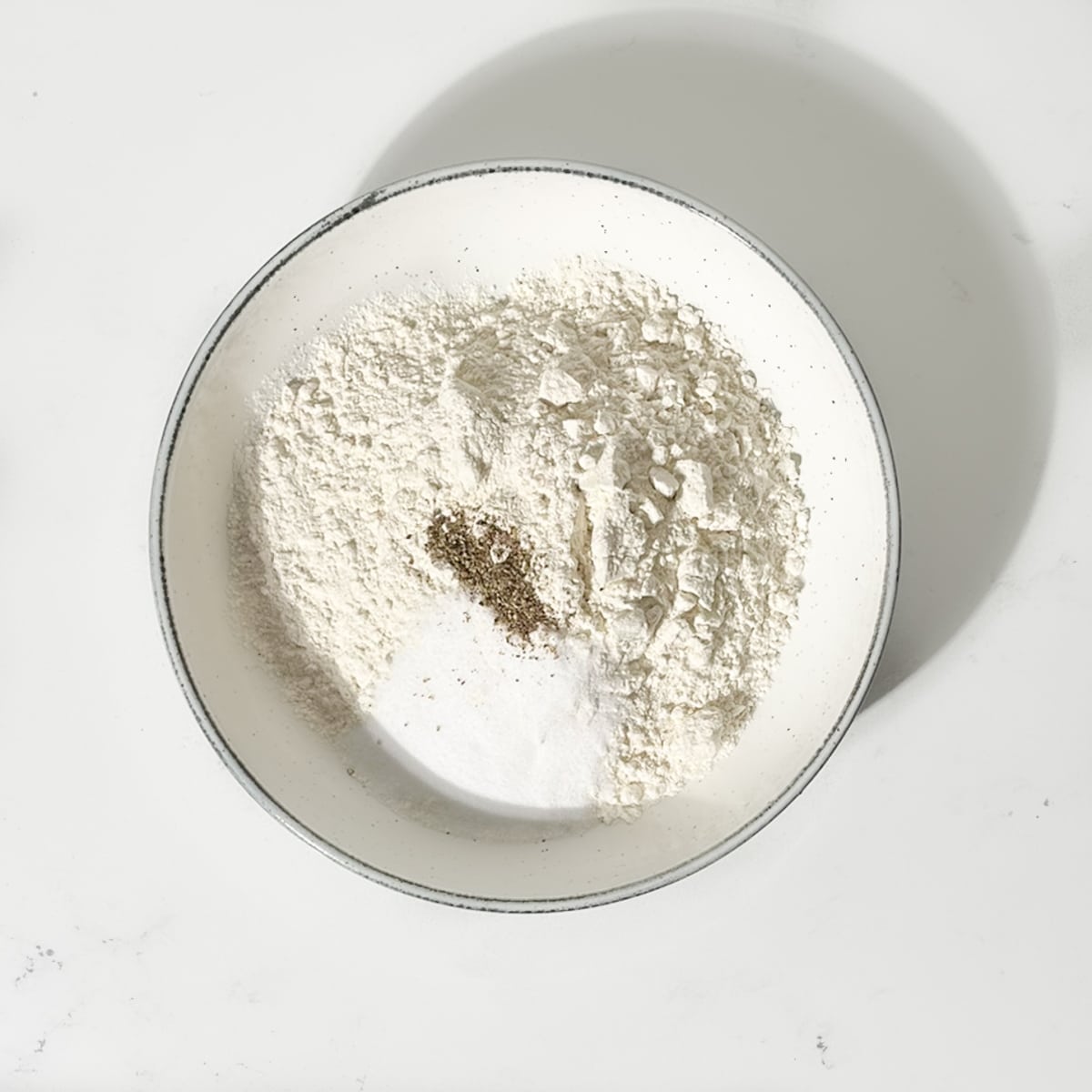
- Add the plain flour, salt and black pepper to a large, shallow bowl and mix them together with a fork.
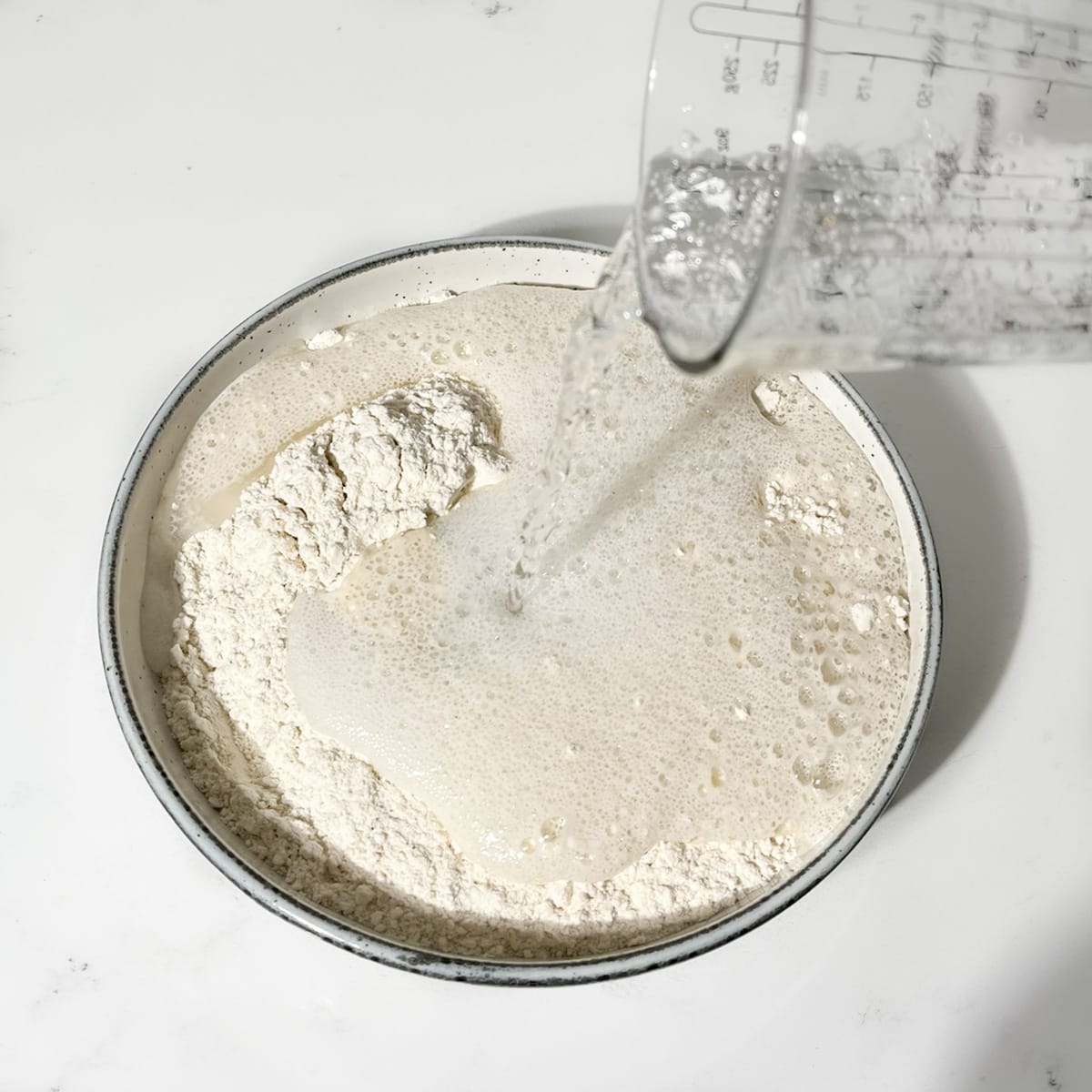
- Add the soda water and whisk until you have a smooth, lump-free batter.
Note: The amount of salt in this recipe might seem excessive but keep in mind that the salt will get diluted significantly in the batter and only a thin coating goes onto each piece of fish. Since the fish is unseasoned, it will rely on the salt in the batter to provide depth of flavour.
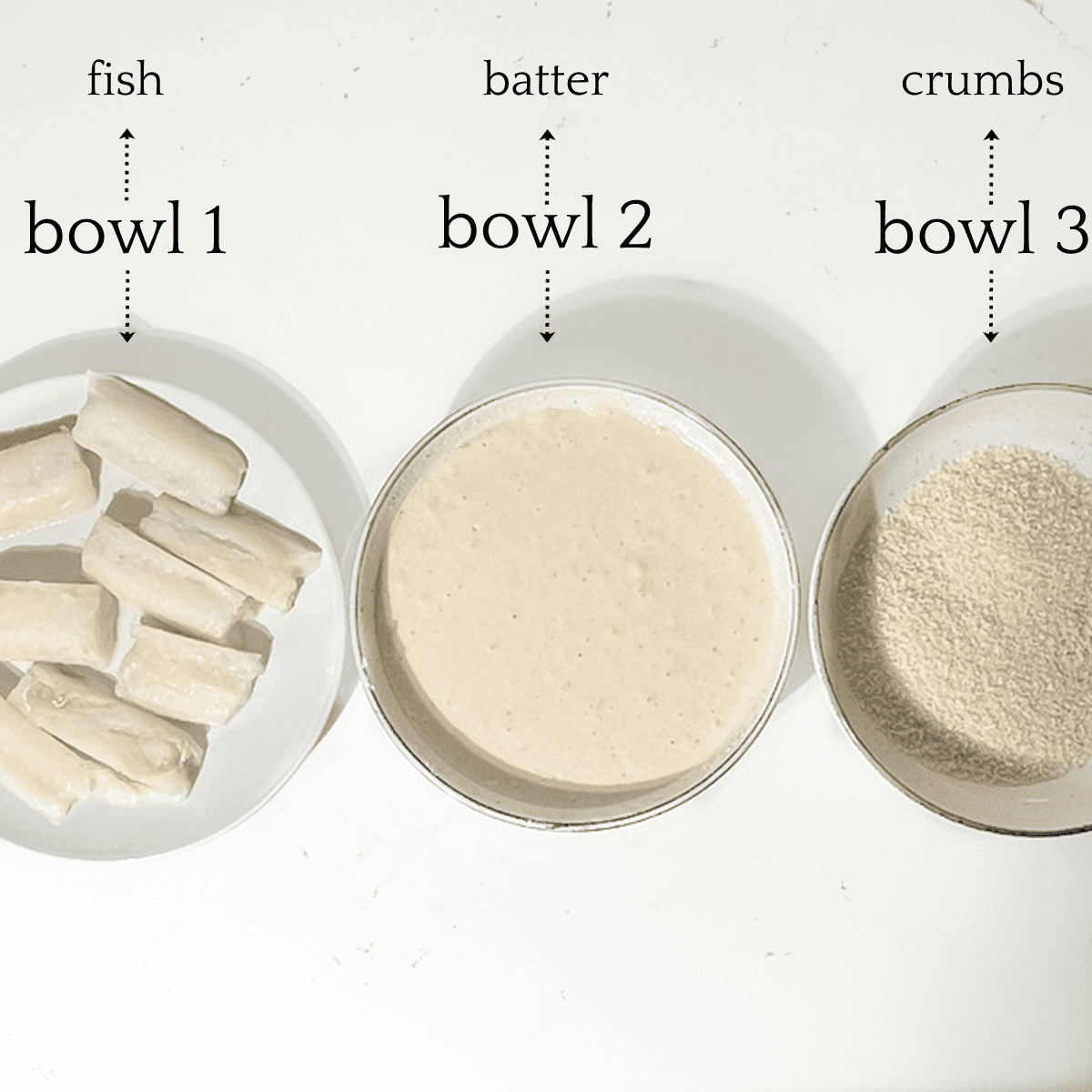
- Arrange your bowls from left to right, starting with the fish, then the batter and lastly, the panko breadcrumbs.
Let's make goujons!
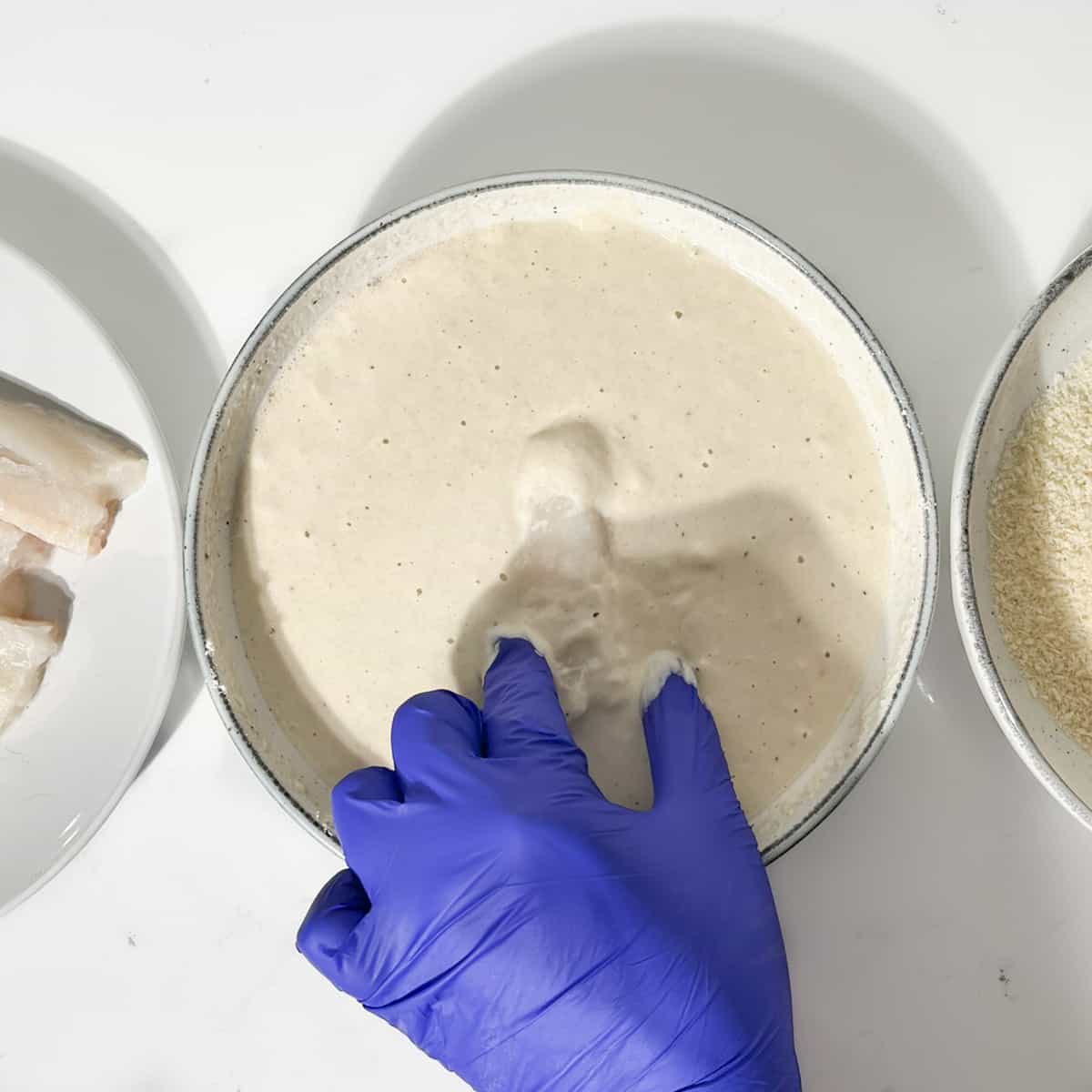
- Dip a strip of fish fillet into the batter and turn it around to fully coat.
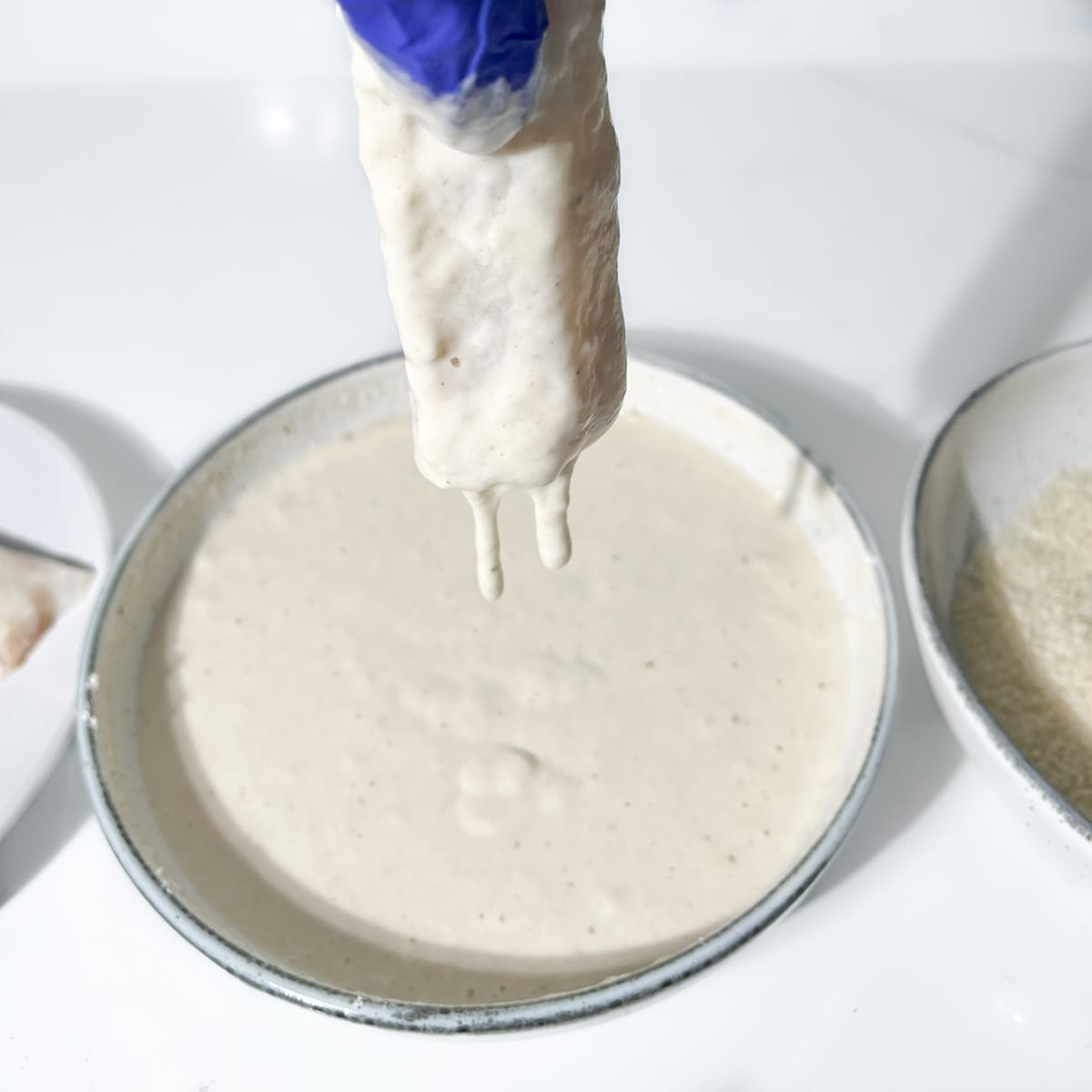
- Let the excess batter drip down first before placing it onto the crumbs.
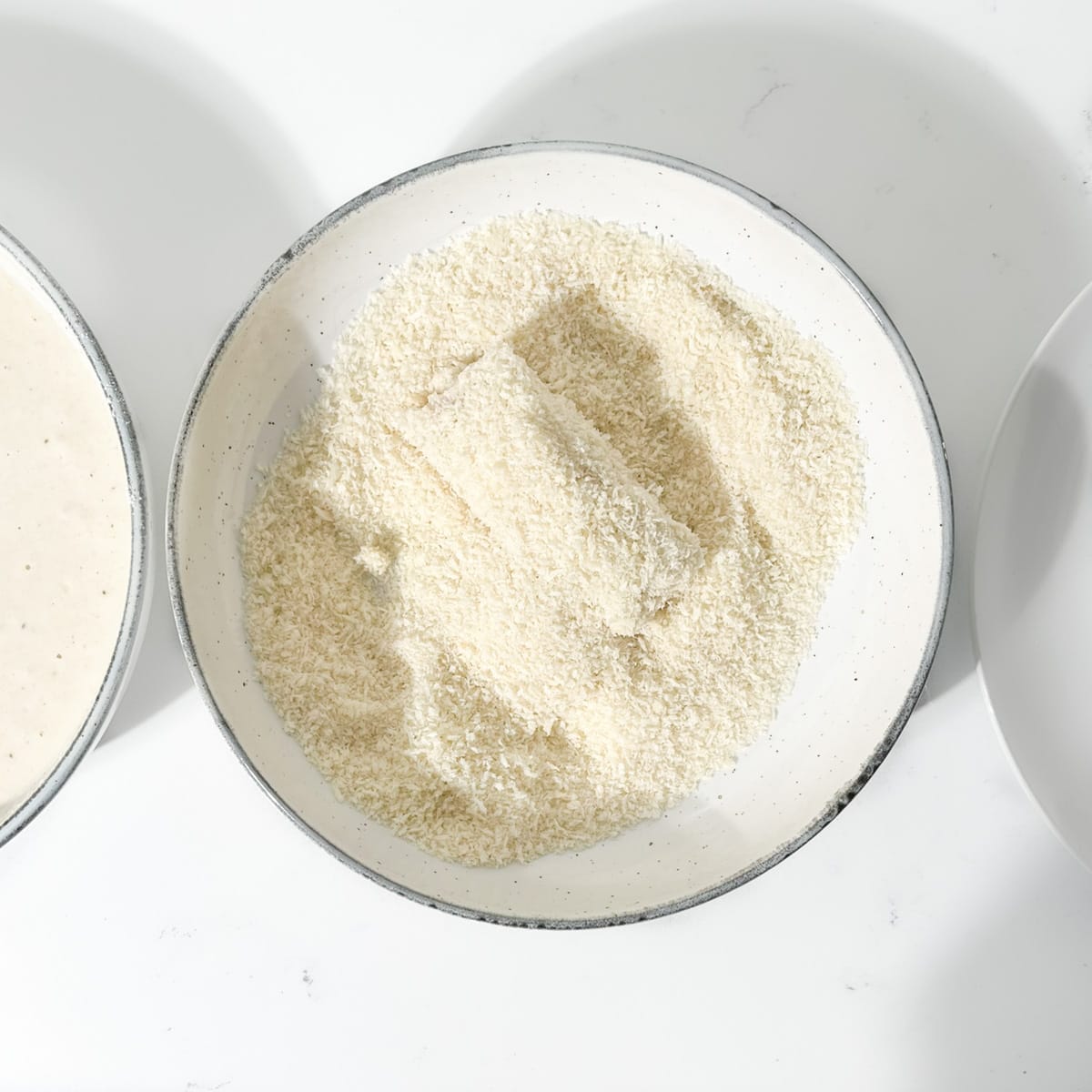
- Using your clean hand, sprinkle the breadcrumbs on the top side of the fish before flipping it over. This prevents the wet batter from mixing with the crumbs too much, ensuring a better coating and preventing sogginess in your crumb bowl.
Note: Top up the crumbs in the tray with the other half of the fresh crumbs when you're about halfway through coating the fish strips if you feel it's necessary.
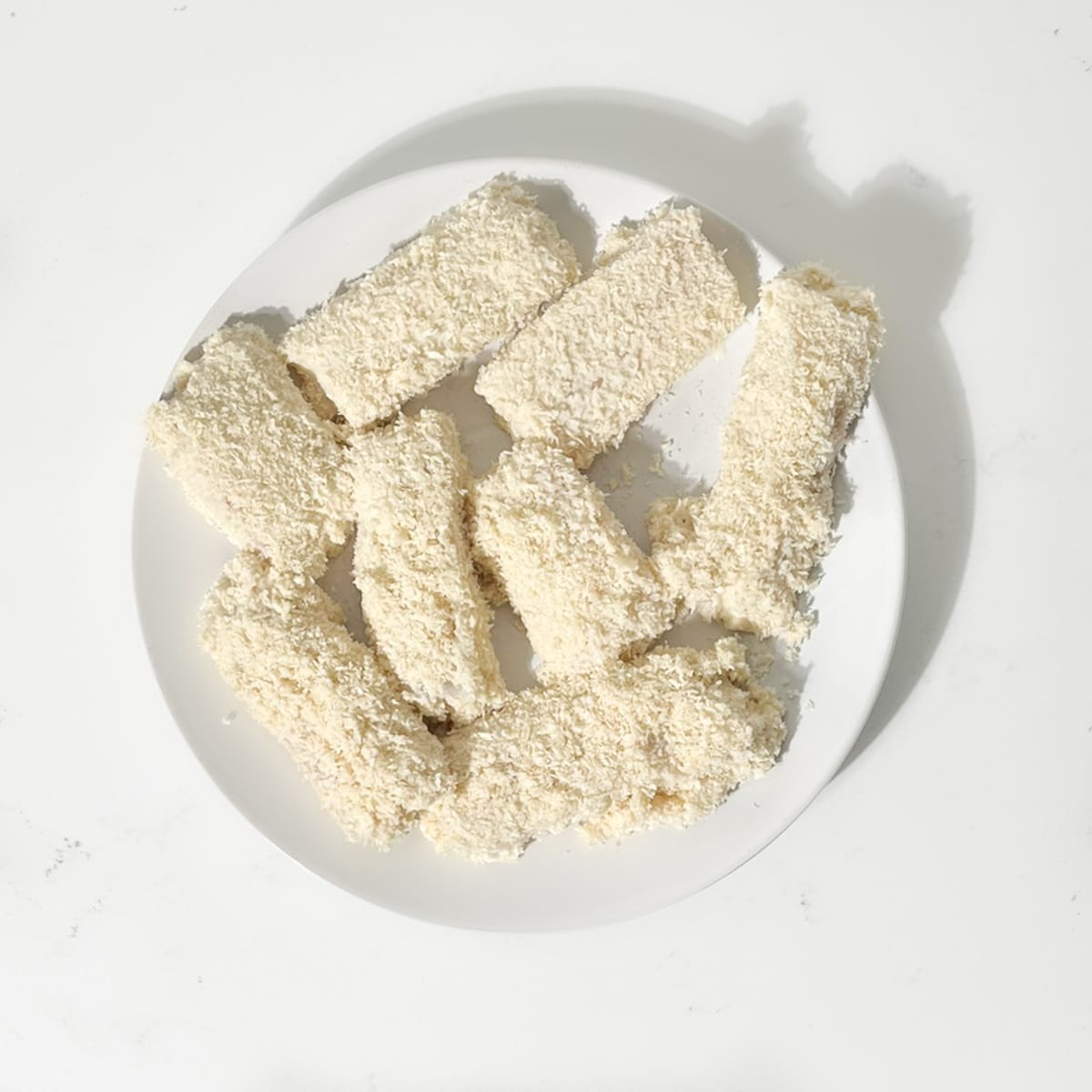
- Repeat the process until all the strips of fish have been dipped in batter and coated in the panko breadcrumbs.
- Over medium-high heat, heat about 3-4cm of oil in a deep saucepan. The oil should be deep enough to ensure the fish is almost fully submerged.
- To test the oil, drop a few crumbs into it. If the crumbs sizzle and start cooking immediately, it means the oil is hot enough and ready for use. Turn the heat down to medium.

- Carefully place the strips of fish fillet into the hot oil in a single layer, making sure to drop them away from you to avoid any oil splashes.
Make sure not to put too many fish fillets in the oil at once. Leave enough space between each piece for them to cook evenly.
Ensure the goujons are not sticking to the bottom of the pan. Right after placing them in the oil, gently move them from left to right with kitchen tongs to ensure they are floating and not sticking.
- Allow the fish to cook for 3 minutes before turning them over with kitchen tongs (the timer on your phone works great for this!)
- Cook for a further 2 minutes before turning them around again.
- Cook for a further 1 minute or until they are golden brown and crispy.
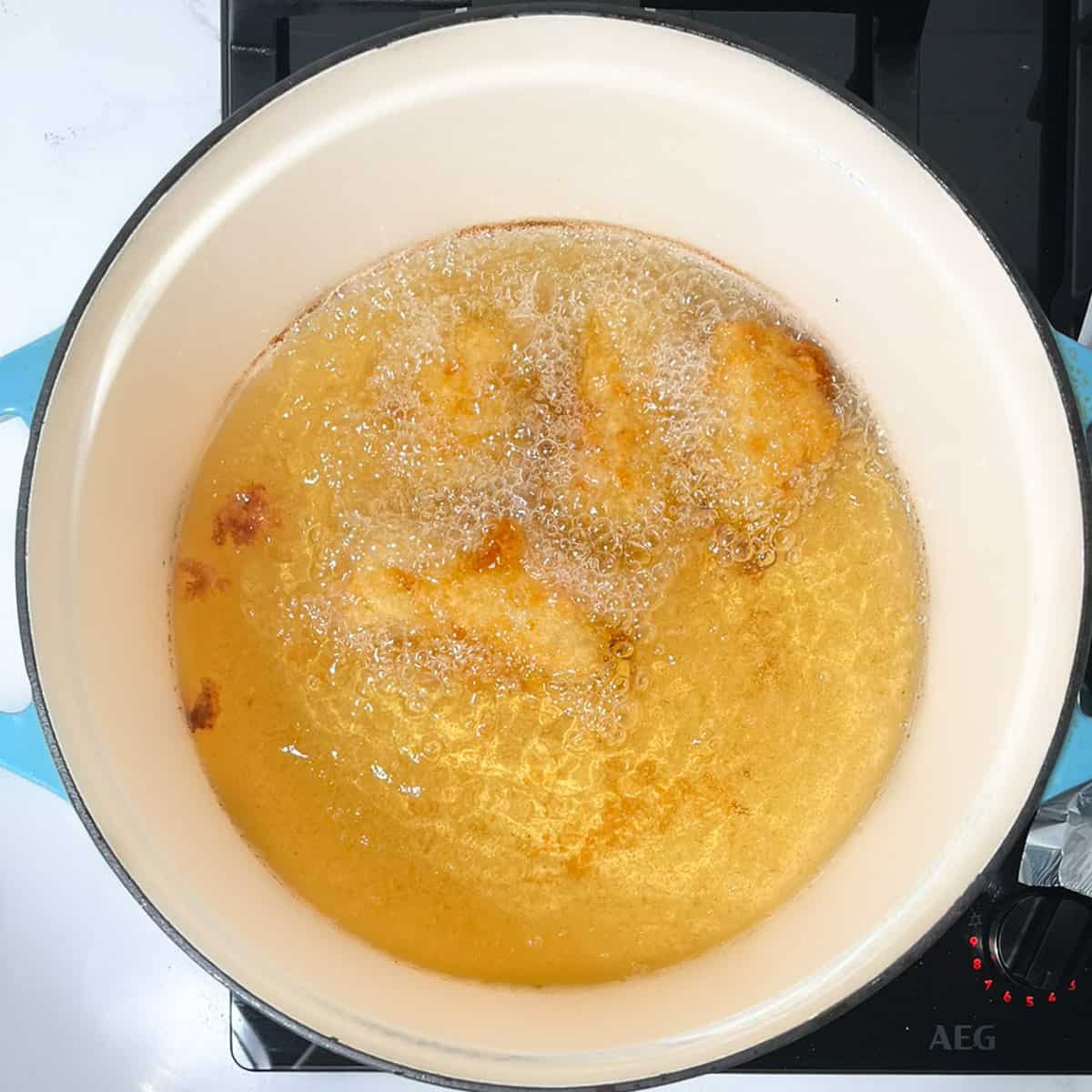
- Using a slotted spoon, transfer the golden brown goujons to the plate lined with an absorbent paper towel to remove excess oil. Repeat the process with the remaining fish.
Storage and reheating
For ultimate crispiness, these fish goujons should be enjoyed immediately. If you do find yourself with some leftovers, they will keep well in the fridge for up to 3 days if stored in an airtight container.
The best option for reheating would be the oven. Place them on a non-stick baking tray and heat them in a preheated oven at 190C/374F for about 10-15 minutes, or until heated through.
What to serve with homemade fish goujons
- As an appetiser with dips like garlic mayo, lemon mayo (add a bit of lemon juice and lemon zest to mayonnaise) aioli, dill mayonnaise, curry mayonnaise, tartare sauce, sweet chilli sauce, Dijon mustard or honey mustard.
- Lemon wedges.
- Make a goujon fish wrap. Add a sauce, some lettuce and chopped gherkins.
- Chips/fries.
- Cornichons (small French gherkins).
- Egg and chips.
- Potato wedges.
- Sweet potato wedges.
- Mushy peas.
- A simple salad, like this Jerusalem salad or Taboule.
- Flavoured rice, like this copycat Nando's spicy rice.
- Crusty bread or Danish bread rolls.
- As a side to a cold pasta salad.
Tips and tricks
Setting up your workstation
Set up your workstation so you can easily move through the steps, like a conveyor belt. From left to right, you will need:
- The fish fillets.
- The bowl with batter to dip the fish into.
- The plate with panko breadcrumbs.
- The stove with your saucepan of hot oil.
- On the other side of the stove, a plate with absorbent kitchen paper to place the fried fish on after cooking.
The best pot/saucepan to use
A heavy-based cast iron pot is ideal for deep frying as it provides excellent heat regulation, ensuring consistent frying temperature throughout the cooking process.
Choose a big, deep pot for frying to prevent oil splatters and accommodate frying several goujons at once. The larger the pot, the better!
Get rid of any excess moisture
Before slicing the fish into strips, pat it dry with kitchen paper to remove excess moisture. This helps the batter adhere better to the fish.
Cook over a medium heat
Use medium heat to fry the fish. High heat can cause the outside to cook too quickly while the inside remains undercooked. Adjust the heat as necessary.
Check the fish before turning
Make sure the fish feels firm and not too bendy before flipping it for the first time. If it still seems fragile and like it might break, let it cook a bit longer before turning.
FAQ
Yes, you can! They are of course at their best served hot, but they are still great cold when served with a dipping sauce.
Hake or cod, simply because it's more traditional in the UK market. The traditional fish to use in France is sole, an excellent choice too.
Yes, you can! Add some spice to crumbs, like cayenne pepper, chilli flakes, curry powder, chilli powder, paprika, garlic powder etc.
A goujon is a small strip of meat, usually either fish or chicken, coated in a batter and then deep-fried.
More fish recipes
Recipe
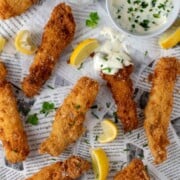
Crispy fish goujons
Equipment
- 1 Large, heavy-based pot. Ideally cast iron
Ingredients
For the fish goujons
- 400 grams fish fillets - like cod or hake
- 200 grams panko breadcrumbs
- 220 grams plain flour
- 2 teaspoons salt
- few grinds of black pepper
- 350 grams soda water - or 350ml
- oil for frying - enough to fill the saucepan 3-4cm deep
For garlic mayo dipping sauce - optional
- 100 grams mayonnaise
- 1 teaspoon crushed garlic
- 1 tablespoon lemon juice
- zest of half a lemon
- 1 tablespoon chopped chives
Instructions
Prepping
- Use a sharp knife to cut the fish into strips. For standard-sized cod or hake fillets, slicing them lengthways along the middle line will give you nicely sized goujons.400 grams fish fillets
- Pat the fish dry with a piece of kitchen paper to remove any moisture from the surface.
- Place a double layer of kitchen paper on a clean plate. This will hold the cooked goujons and soak up any excess oil.
- Spread half of the panko crumbs onto a plate or shallow dish. If needed, you can top it up with the remaining fresh crumbs when you're halfway through the coating process.Note: We recommend adding only half of the breadcrumbs at first because they can become moist from the wet flour mixture, making it difficult to achieve a crispy coating. Save the bone-dry breadcrumbs and add them as needed.200 grams panko breadcrumbs
- Add the plain flour, salt and black pepper to a large, shallow bowl and mix them together with a fork.220 grams plain flour, 2 teaspoons salt, few grinds of black pepper
- Add the soda water and whisk until you have a smooth, lump-free batter. Note: The amount of salt in this recipe might seem excessive but keep in mind that the salt will get diluted significantly in the batter and only a thin coating goes onto each piece of fish. Since the fish is unseasoned, it will rely on the salt in the batter to provide depth of flavour.350 grams soda water
- Arrange your bowls from left to right, starting with the fish, then the batter and lastly, the panko breadcrumbs.
Let's make goujons!
- Dip a strip of fish fillet into the batter and turn it around to fully coat.
- Let the excess batter drip down first before placing it onto the crumbs.
- Using your clean hand, sprinkle the breadcrumbs on the top side of the fish before flipping it over. This prevents the wet batter from mixing with the crumbs too much, ensuring a better coating and preventing sogginess in your crumb bowl.Note: Top up the crumbs in the tray with the other half of the fresh crumbs when you're about halfway through coating the fish strips if you feel it's necessary.
- Repeat the process until all the strips of fish have been dipped in batter and coated in the panko breadcrumbs.
- Over medium-high heat, heat about 3-4cm of oil in a deep saucepan. The oil should be deep enough to ensure the fish is almost fully submerged.oil for frying
- To test the oil, drop a few crumbs into it. If the crumbs sizzle and start cooking immediately, it means the oil is hot enough and ready for use. Turn the heat down to medium.
- Carefully place the fish strips into the hot oil in a single layer, making sure to drop them away from you to avoid any oil splashes.Make sure not to put too many fish fillets in the oil at once. Leave enough space between each piece for them to cook evenly.Ensure the goujons are not sticking to the bottom of the pan. Right after placing them in the oil, gently move them from left to right with kitchen tongs to ensure they are floating and not sticking.
- Allow the fish to cook for 3 minutes before turning them over with kitchen tongs (the timer on your phone works great for this!)
- Cook for a further 2 minutes before turning them around again.
- Cook for a further 1 minute or until they are golden brown and crispy.
- Using a slotted spoon, transfer the golden brown goujons to the plate lined with an absorbent paper towel to remove excess oil. Repeat the process with the remaining fish.
To make the garlic mayo dressing
- Add all the ingredients for the dressing to a small bowl. Mix and serve.100 grams mayonnaise, 1 teaspoon crushed garlic, 1 tablespoon lemon juice, zest of half a lemon, 1 tablespoon chopped chives
Notes
Setting up your workstation
Set up your workstation so you can easily move through the steps, like a conveyor belt. From left to right, you will need:- The fish fillets.
- The bowl with batter to dip the fish into.
- The plate with panko breadcrumbs.
- The stove with your saucepan of hot oil.
- On the other side of the stove, a plate with absorbent kitchen paper to place the fried fish on after cooking.
The best pot/saucepan to use
A heavy-based cast iron pot is ideal for deep frying as it provides excellent heat regulation, ensuring consistent frying temperature throughout the cooking process. Choose a big, deep pot for frying to prevent oil splatters and accommodate frying several goujons at once. The larger the pot, the better!Get rid of any excess moisture
Before slicing the fish into strips, pat it dry with kitchen paper to remove excess moisture. This helps the batter adhere better to the fish.Cook over a medium heat
Use medium heat to fry the fish. High heat can cause the outside to cook too quickly while the inside remains undercooked. Adjust the heat as necessary.Check the fish before turning
Make sure the fish feels firm and not too bendy before flipping it for the first time. If it still seems fragile and like it might break, let it cook a bit longer before turning.**Nutritional data disclaimer**
Please keep in mind that the nutritional information provided below is calculated by a third party and we cannot guarantee the accuracy. We try our best to give you the most accurate information, but we do not take responsibility for errors that may be present. Also, the nutritional value of the recipe may change depending on the exact brands and products used. We recommend that you consult with a qualified healthcare professional or registered dietitian for personalised advice on your dietary needs.
Nutrition
For food safety advice, including guidance on food allergies


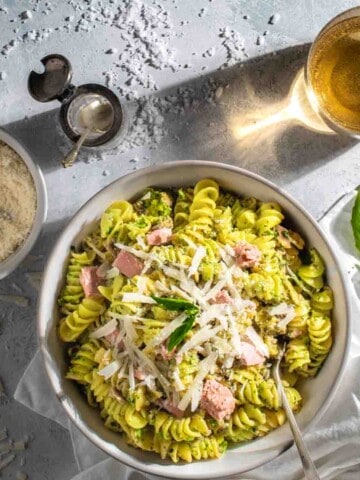
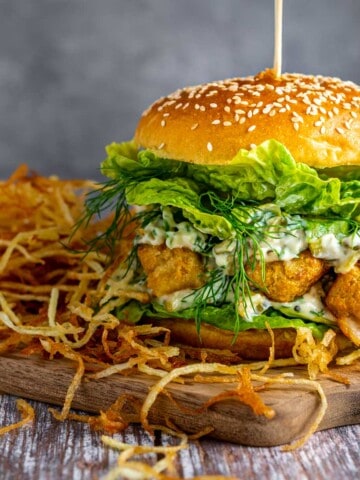
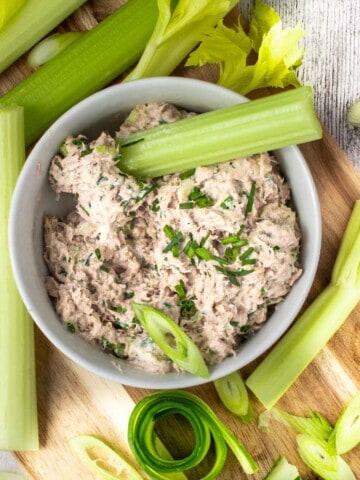
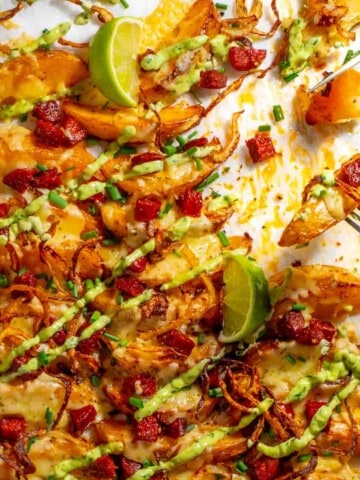
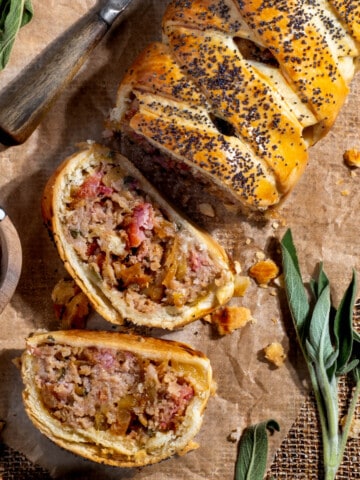
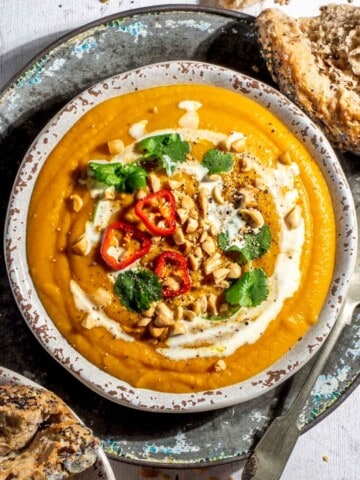
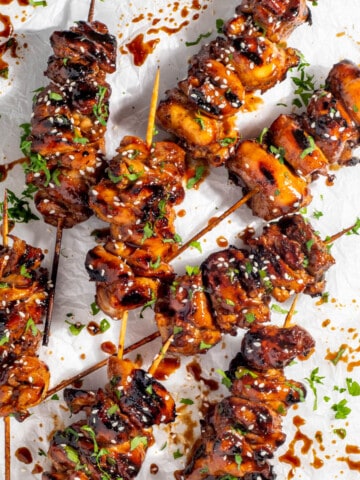
Leave a Reply